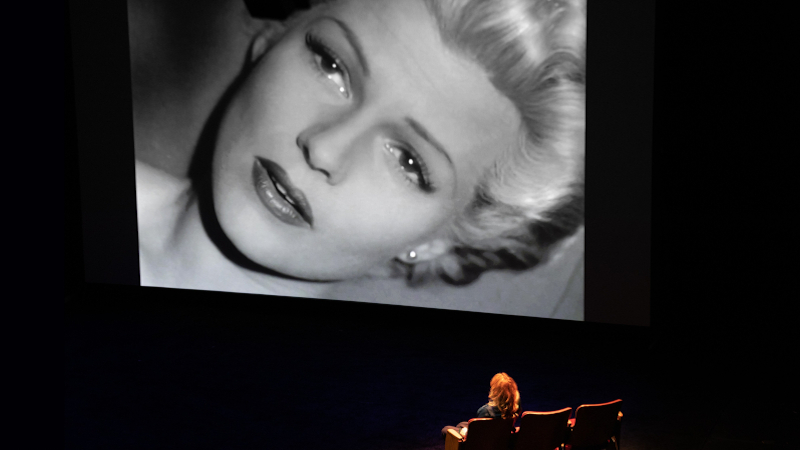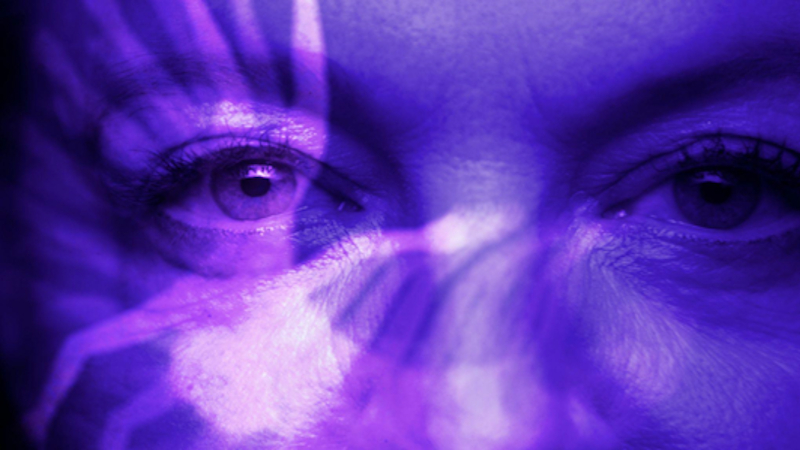Director – Nina Menkes – 2022 – US – Cert. 18 – 107m
***1/2
A lecture on how movies treat male and female bodies differently, augmented with interviews from female directors, actresses, critics and others, using numerous film clips – on BFI Player from Monday, July 17th
This is a film based on a lecture given by director Menkes under the title: Sex and Power, the Visual Language of Cinema. As far as I can tell from the evidence here presented, it is (or was) something like a TED Talk but much longer. It’s possible it may have worked better as a live lecture than as a film. I’m guessing also there’s something of the band Talking Heads’ Stop Making Sense (Jonathan Demme, 1984) concert film about this: a live performing act wanting a film of their performance so it can reach a wider audience without the necessity of the performers physically touring the act. But where Stop Making Sense is a masterpiece of the filmed performance (or, technically, in that film’s specific case, the filmed music concert) genre, Brainwashed: Sex-Camera-Power is not. Even if you’re broadly in tune with its thesis (which I like to think I am), it does feel like you’re being repeatedly told the same thing and somewhere (perhaps around the 75 minute mark) you get fed up with it.
The sheer breadth of film clips is impressive, although (perhaps inevitably) some clips are explored at much greater length than others, while specific clips which cry out for further analysis are glossed over or even omitted. Likewise the range of interviewees, at least up to a point, some of whom prove very good value for money (critic Laura Mulvey, performers Rosanna Arquette and Charlyne Yi, director Julie Dash), some of whom appear briefly making you wish they’d had more screen time (director Penelope Spheeris). There’s a legal line in the press blurb telling us that the production team reached out to most of the living directors represented by the film clips, most of them male, who declined to appear. Put that way, it sounds like a snub – but perhaps the schedules just weren’t compatible in some cases or people just found Menkes and team too didactic to work with. We’ll never know.

Certainly, there are clips in the film which cry out for their directors to be interviewed. Top of the list would be Kathryn Bigelow, represented by a clip from her historic, first woman to win the Best Director Oscar movie The Hurt Locker (2008, although her wider body of work is at least as fascinating if not more so) and not far behind, Emerald Fennell who wrote and directed the exploited woman genre-reversing Promising Young Woman (2020). But neither are there clips from the likes of director Katt Shea (Stripped To Kill, 1987; Poison Ivy, 1992) or interview material with academic Tania Modleski (mentioned later in this review for her pioneering study of Hitchcock) or producer Barbara Broccoli who (along with Michael G. Wilson) is part of the hands-on Broccoli family dynasty that produces the Bond movies.
But also, where are the female cinematographers, the editors and other behind-the-scenes female talent who might have shed light on all this? We get one intimacy co-ordinator (Ita O’Brien who worked on I May Destroy You and Normal People, BBC series, 2020) but that’s about it.
Where is any mention of the Bechdel Test?

To give but three examples of where this documentary comes unstuck…
Menkes makes great use of a Hitchcock film (one of his best, Notorious, 1946) to explain male viewer and female object and refers in parts to the objectification in Vertigo (1958) of its heroine and similar treatment in Rear Window (1954) of a minor character (Miss Torso). She clearly loves Vertigo enough to have her composer Sharon Farber do a pastiche of Bernard Herrmann’s dark, brooding, neo-operatic score which feels like a poor copy. But she doesn’t seem to have much new to say here – it’s all been done better elsewhere, including the unsettling feminist reading of Hitchcock in Tania Modleski’s groundbreaking book The Women Who Knew Too Much, which covers, among others, Notorious, Rear Window and Vertigo.
The director throws in the shot of the dancing Maria at the Yoshiwara nightclub in Metropolis (Fritz Lang, 1927) as another eroticised image of women. Well, yes it is. But in the context of that film, there are two Marias – the good Maria preaching love and reconciliation and (when the city is threatened with flooding) rescuing the children, and the robot Maria, the bad girl who incites the workers to violence and moonlights as an erotic dancer in sequences which suggest all men are beasts and the bad robot Maria is luring them on. So there’s a whole moral framework here about good and bad, moral and immoral, and while that might be worth interrogating, to merely pull out the eroticised image of the dancing Maria because it happens to fit her thesis seems to be to miss the point.
The Bond films likewise get treated dismissively with clips of Halle Berry’s slo-mo cleavage rising from the water in Die Another Day (Lee Tamahori, 2002) and the gold-painted female corpse from Goldfinger (Guy Hamilton, 1964). There’s a great deal more to be said about Bond in terms of archetypes, the language of film, representation of women and more both in Ian Fleming’s original books and the film series that came off the back of them. Sometimes the series broke new ground, sometimes it merely aped the trends occurring elsewhere in the movie business.
There’s no space given to the fact of the golden girl corpse in Bond movie Goldfinger being taken from the book from which the film was adapted, which points to a larger problem with Menkes’ film: it considers cinema clips in a vacuum rather than in the context of a film. To take the most obvious example, the objectification of women has been going on a long time in Western art, maybe since the fifteenth century, with the female nude long considered a suitable subject to paint and hang in galleries or on drawing room walls. Clearly, this has fed into the contemporary image-making process, of which today’s movie business is a part, and the achievement of pictorial composition on the screen by cinematography, art direction and other creative disciplines is not to be taken lightly. But Menkes makes no mention whatsoever of western art and painting. Not even a cursory mention.
Menkes is on much stronger ground when she engages with the craft of moviemaking. She articulates the very different approaches used to photograph men and women in Hollywood, showing how men are constructed on screen as active doers in physical, three-dimensional space while women become objects of male desire (or, in Mulvey’s famous phrase, of “the male gaze”) who are photographed by the camera in chopped up segments and represented in abstract or ungrounded space rather than the very real, physical space afforded their three-dimensional counterparts. She brilliantly illustrates this view with a clip of Rita Hayworth from The Lady From Shanghai (Orson Welles, 1947) photographed in separate body parts sunbathing in abstract space while around her on the yacht, men are seen as more active masters of their destiny.

But you can’t help feeling she’s come up with a very specific set of parameters then hunted down film clips to fit her thesis, and that it would be possible to come up with different clips to prove very different theses. The end of that film, for example, puts women and men in the same space (the famous fun house mirrors sequence, which also cuts up images of both men and women in exactly the same way). I can’t see how this fits Menkes’ theory, and she doesn’t touch it. (If you’re reading this, Nina, I’d love you to come back at me and present a contrary argument.)
The one place her film really scores positively is in its analysis of a scene from Raging Bull (1980, Martin Scorsese), the scene with De Niro and others round a pool watching / discussing the objectified, sunbathing Cathy Moriarty. Menkes uses clips followed by simple yet effective computer graphics to reconstruct the geography of the swimming pool, showing where the characters are situated in space relative to one another within the scene. After watching her breakdown, the scene looks completely different from how it previously appeared.
If this documentary overall is not only overly didactic but also too long, it’s worth seeing for occasional flashes of brilliance such as these.
Brainwashed: Sex-Camera-Power is on BFI Player from Monday, July 17th. It was previously out in cinemas in the UK and Ireland on Friday, May 12th.
Cinematic Sorceress: The Films of Nina Menkes – season runs at BFI Southbank from Saturday, May 6th to Wednesday, May 31st.
The following Menkes films will be available on BFI Player from Monday, May 1st: The Great Sadness Of Zohara, Queen Of Diamonds, The Bloody Child, Phantom Love, Dissolution and Magdalena Viraga. Brainwashed: Sex-Camera-Power will follow on Monday, July 17th.
Trailer:
